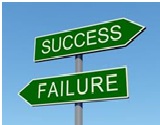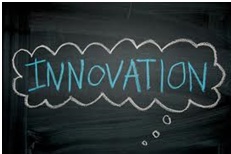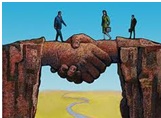|
 |
|
 |
|
|
||
Gary Hamel and CK Prahalad, Competing for the Future (1996) Hugely influential thinkers in corporate strategy. Hamel (an Amercan, pictured right) runs the management consultancy business, Strategos. Prahalad (born in India, pictured right below) was a business school professor in
Michigan,USA, who died in 2010.
See also... Gary Hamel and CK Prahalad in the Management Gurus section.
Book summary
How to be successful in business
1. Exploit “core competencies” and create new ones Core competencies are:
An example is Sony’s ability to miniaturize leading to successful products like the Play Station.
2. Strategic intent This is an inspirational and challenging statement of an organization’s purpose that gives:
For example in the photocopier market Canon’s strategic intent was ‘Beat Xerox’. 3. Create the future To create the future a company must do one of these:
a) invent new industries (as Apple did with the PC).
b) reinvent existing industries by:
A company must ask itself what it wants its industry to be like in 5 to 10 years time. So, during that time period, it must anticipate and resolve the company’s key concerns:
Such planning and foresight will achieve revolutionary results (profitably exploiting the future first) through evolutionary change, driven by calm urgency (not forced by a crisis).
4. Expeditionary marketing This discovers tomorrow’s market opportunities by finding imaginative and creative
solutions to customers’ future problems faster than competitors. This means amazing future customers by:
Customers’ needs may be clearly stated by them through market research (articulated needs). But sometimes customers can’t explain their future requirements (unarticulated needs), because a product is so revolutionary and out of their experience. So an innovative company (like Apple) may successfully sell the product without prior customer approval. 5. Creative and committed employees Employees make core competencies and customer satisfaction possible. They must be empowered to take responsibility for results through:
a) fairness (accepting that managers as well as employees are to blame for failure). b) empathetic and ethical management (leading to mutual trust and respect).
c) dedication to the organization’s purpose “Community activists” are vital, because they combine change with commitment.
d) vision and stretch goals (to “challenge employees to accomplish the seemingly impossible”) e) inspirational organizational purpose A “shared sense of direction” is crucial to stop empowerment turning into chaos.
f) avoid redundancies (if you can) Redundancies (downsizing):
6. Productivity improvement and resource leverage Successful businesses get to the future first and for less by:
7. Continuous learning
8. Strategic architecture This is how a company makes the future a reality through:
Key quotes on human resource management What employees hear is that they’re the firm’s most valuable assets, what they know is that they’re the most expendable assets. Downsizing, the equivalent of corporate anorexia, can make a company thinner, it doesn’t necessarily make it healthier.
Key quote on finance and cost control A company must not only get to the future first, it must get there for less.
Key quote on innovation See the future before it arrives.
Key quote on business success In business, as in art, what distinguishes leaders from laggards, and greatness from mediocrity, is the ability to uniquely imagine what could be.
Key quote on customers Companies that create the future do more than satisfy customers, they constantly amaze them.
Key quote on competitive advantage A company surrenders tomorrow’s businesses when it gets better without getting different.
Key quote on strategy The genesis of the strategy process must be a purposely created misfit between where the firm is and where it wants to be.
Key quote on the learning organization A company must unlearn much of its past before it can find the future.
|
|
|
||
|
|
||
| Copyright © wisdomtowin.com 2025 All Rights Reserved | ||
|

















